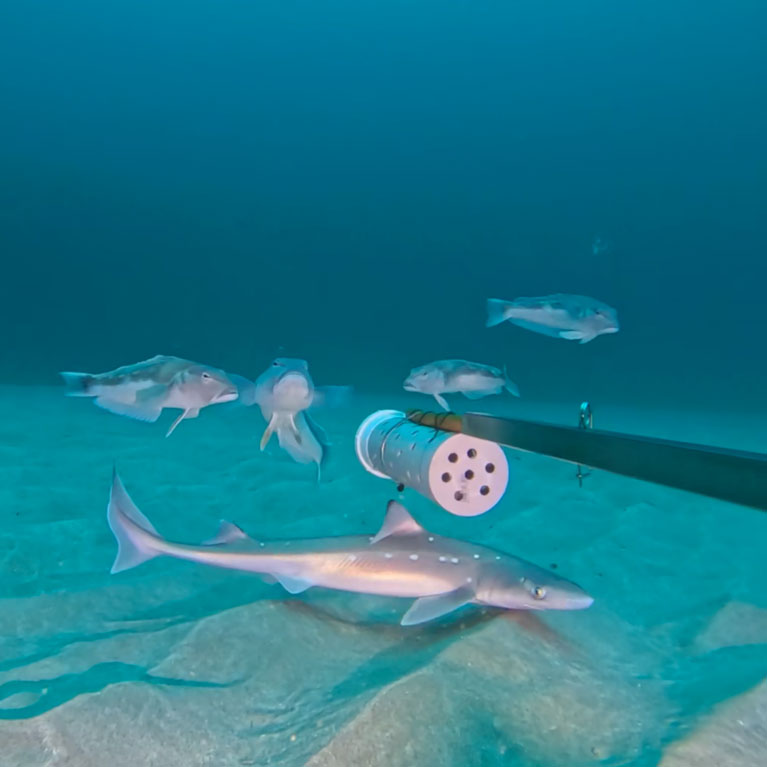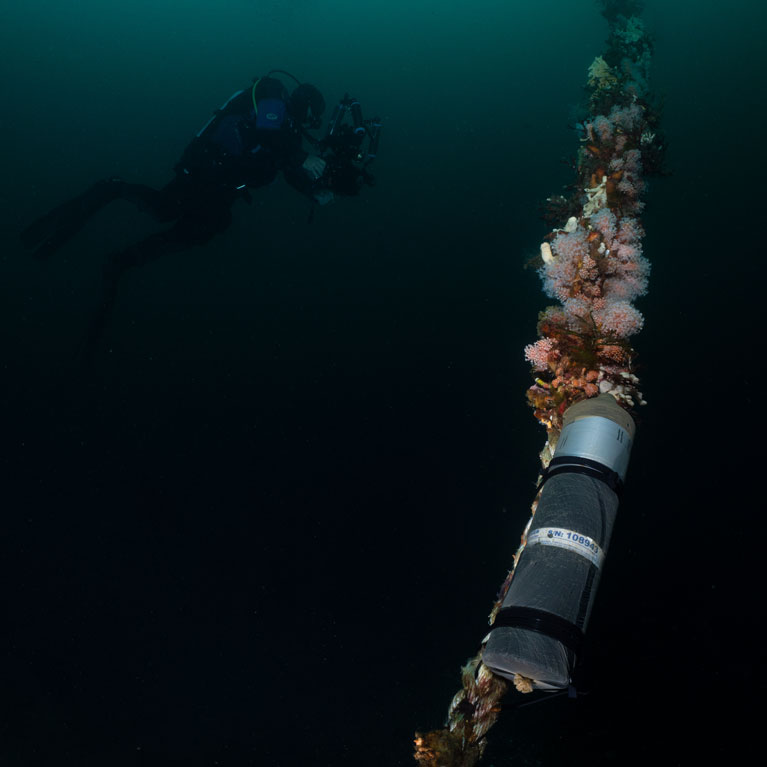Are Fiordland’s MPAs protecting sharks?
In one of the world’s most remote wildernesses, Eva is trying to understand how sharks use marine reserves (no-take areas). She wants to become better informed about how to protect them from human impacts such as coastal development and fishing. She will identify key areas for threatened coastal sharks like the school shark, spiny dogfish and broadnose sevengill shark, and provide insights into their movements and habitat use. This information is crucial for ensuring their long-term conservation in this remote World Heritage Site.
I grew up far from the ocean, but despite having lived in the mountains of Colorado and the deserts of Namibia, I found that I’m most at home in the sea. When I was a child, I was introduced to conservation ecology while working with my parents on their research on desert-dwelling elephants in Namibia. This experience led to my lifelong passion and career in research and conservation of unique animals and wild places.
Through my marine biology studies in Tanzania, I discovered my love for the ocean and saw at first hand the impacts that humans...


The Effectiveness of Fiordland, New Zealand’s Marine Reserves in Protecting Threatened Sharks
This project aims to assess the importance and connectivity of marine reserves for threatened coastal sharks in Fiordland, New Zealand, to inform how conservation efforts may best protect these species in the future.
Fiordland is home to several threatened shark species. By understanding how these species use marine reserves (no-take areas), we can become better informed about how to protect them from human impacts such as coastal development and fishing. This project aims to identify key areas for these coastal sharks and provide insight into their movements and habitat use. This information is crucial for ensuring their long-term conservation in this remote World Heritage Site.
New Zealand’s Fiordland is iconic and one of the most remote and untouched wilderness areas on earth. The deep, dark waters of this unique and spectacular ecosystem are home to several threatened elasmobranchs, including the school shark, spiny dogfish and broadnose sevengill shark. Global population declines have caused the school shark to be listed as Critically Endangered by the IUCN, while spiny dogfish and broadnose sevengill sharks are also facing declines in parts of their range. These sharks are well known in Fiordland and without them the ecosystem would not be the same. Shifts in the distribution and abundance of these species can have ecosystem-wide impacts. Also, the reliance of these species on coastal habitats for food and reproduction exposes them to regular human interaction. In Fiordland these species are subjected to habitat disturbance and incidental capture by increasing recreational fishing.
Despite their ecological significance, our knowledge of these sharks in Fiordland is limited and the potential importance of the area’s marine reserves for coastal sharks is poorly understood. We do not know how much time coastal sharks spend inside marine reserves nor how frequently they visit these areas. We also do not know if some sharks are resident, or have nursery areas, in the fiords.
This project aims to address this knowledge gap using acoustic telemetry and seeks to understand coastal shark habitat use within Fiordland’s marine protected areas. This information is vital to supporting the persistence and resilience of these species in the long term.
- To establish movement patterns and key areas by examining movement overlap between species and identifying areas of importance for coastal sharks, including residency, aggregation sites and potential nursery areas.
- To evaluate the effectiveness of marine reserve areas by assessing how much time sharks spend within marine reserves, investigating movements between marine reserves and identifying if key use areas exist outside marine reserves.
- To understand habitat use by examining environmental conditions, habitat types and prey availability in shark-frequented areas and assessing whether marine reserves provide better habitat suitability and food availability for coastal shark species.

